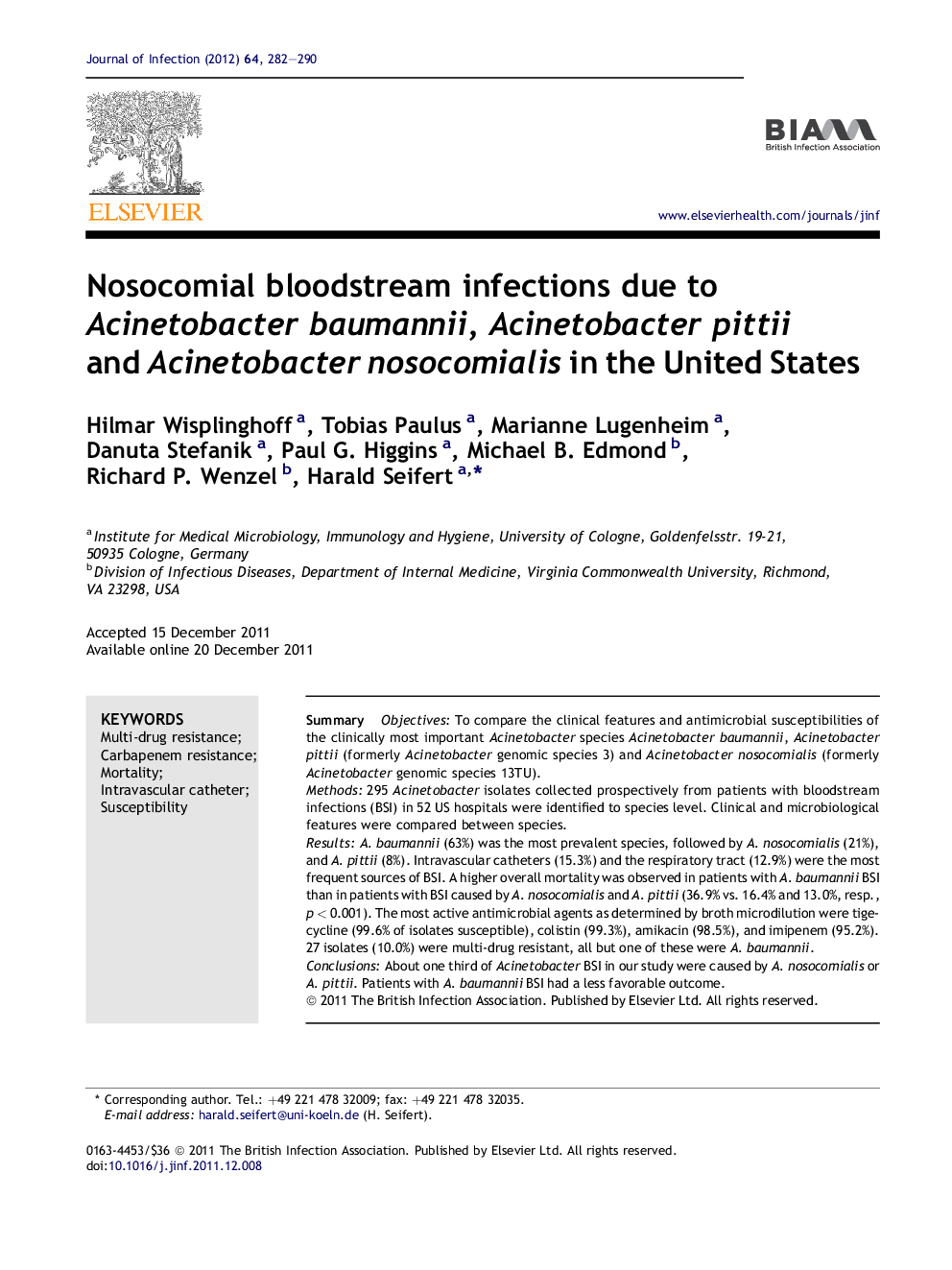| Article ID | Journal | Published Year | Pages | File Type |
|---|---|---|---|---|
| 3375024 | Journal of Infection | 2012 | 9 Pages |
SummaryObjectivesTo compare the clinical features and antimicrobial susceptibilities of the clinically most important Acinetobacter species Acinetobacter baumannii, Acinetobacter pittii (formerly Acinetobacter genomic species 3) and Acinetobacter nosocomialis (formerly Acinetobacter genomic species 13TU).Methods295 Acinetobacter isolates collected prospectively from patients with bloodstream infections (BSI) in 52 US hospitals were identified to species level. Clinical and microbiological features were compared between species.ResultsA. baumannii (63%) was the most prevalent species, followed by A. nosocomialis (21%), and A. pittii (8%). Intravascular catheters (15.3%) and the respiratory tract (12.9%) were the most frequent sources of BSI. A higher overall mortality was observed in patients with A. baumannii BSI than in patients with BSI caused by A. nosocomialis and A. pittii (36.9% vs. 16.4% and 13.0%, resp., p < 0.001). The most active antimicrobial agents as determined by broth microdilution were tigecycline (99.6% of isolates susceptible), colistin (99.3%), amikacin (98.5%), and imipenem (95.2%). 27 isolates (10.0%) were multi-drug resistant, all but one of these were A. baumannii.ConclusionsAbout one third of Acinetobacter BSI in our study were caused by A. nosocomialis or A. pittii. Patients with A. baumannii BSI had a less favorable outcome.
